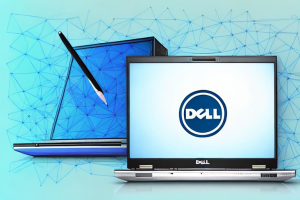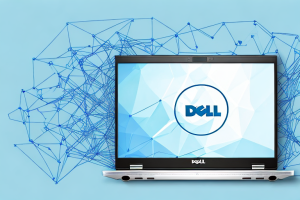How to enable virtualization on a Dell OptiPlex 9020
8 min read
A dell optiplex 9020 computer with a highlighted virtualization setting
Virtualization has become an essential technology in modern computing, and for good reason. It allows multiple operating systems to run on a single machine, which can simplify IT management, improve efficiency, and reduce hardware costs. If you’re using a Dell OptiPlex 9020, you may want to know how to enable virtualization to take advantage of these benefits. In this article, we’ll explain what virtualization is, how to check if your Dell OptiPlex 9020 supports it, how to enable it in BIOS settings step-by-step, and more.
Understand what virtualization is and why it’s important
Virtualization is the process of creating a virtual version of an operating system, which runs as a guest on a host operating system. This means that you can run multiple operating systems on one physical machine, each with its own resources and applications. Virtualization has become increasingly popular over the past few years because it can reduce hardware costs, simplify IT management, and maximize hardware utilization.
Virtualization is also becoming more important as organizations embrace cloud computing and other distributed computing technologies. With virtualization, you can run multiple virtual machines on a single physical server, which can improve efficiency, scalability, and availability.
Another benefit of virtualization is that it can improve disaster recovery and business continuity. By creating virtual copies of servers and applications, you can easily replicate them to other physical machines or cloud environments in case of a disaster. This can help minimize downtime and ensure that critical business operations can continue even in the event of a major outage.
Virtualization can also help improve security by isolating applications and operating systems from each other. This can help prevent malware and other security threats from spreading across the entire system. Additionally, virtualization can provide a secure testing environment for new applications and updates, allowing you to test them without risking the stability of your production environment.
Check if your Dell OptiPlex 9020 supports virtualization
The first step to enabling virtualization on a Dell OptiPlex 9020 is to check if your hardware supports it. To do this, you need to look for the virtualization option in your BIOS settings.
Restart your computer and press the F2 key to access the BIOS settings. Go to the “System Information” section and look for the “Virtualization Technology” option. If it’s there, your hardware supports virtualization. If not, your hardware may not support virtualization, or the option may be disabled.
Enabling virtualization on your Dell OptiPlex 9020 can greatly improve the performance of virtual machines and allow you to run multiple operating systems simultaneously. If you find that the virtualization option is disabled in your BIOS settings, you can try enabling it by selecting the option and saving the changes. However, if the option is not available, it may be necessary to update your BIOS or upgrade your hardware to a model that supports virtualization.
Enable virtualization in BIOS settings
If you have confirmed that your Dell OptiPlex 9020 supports virtualization, the next step is to enable it in the BIOS settings. Here’s how to do it:
Step-by-step guide to accessing BIOS settings on a Dell OptiPlex 9020
- Restart your computer
- Press F2 to enter BIOS setup mode
- Navigate to the “Virtualization” option
- Select “Enabled”
- Press F10 to save and exit
How to navigate the BIOS interface to enable virtualization
Enabling virtualization requires you to navigate the BIOS interface, which can be complex and unfamiliar to many users. Here are some detailed steps to help you enable virtualization:
- First, enter BIOS setup mode by pressing the F2 key during startup.
- Navigate to the “Virtualization” option, which is typically located under the “Advanced” or “CPU” tabs.
- Select “Enabled” or “On” to enable virtualization.
- Save your changes by pressing F10 or the “Save Changes and Exit” option.
- Your computer will reboot, and virtualization will be enabled.
Enabling virtualization can greatly enhance the performance of your computer, especially if you plan to run virtual machines or use software that requires virtualization. It allows your computer to create a virtual environment that can run multiple operating systems or applications simultaneously.
However, it’s important to note that enabling virtualization may also have security implications, as it can potentially allow malware to escape from a virtual machine and infect the host system. Therefore, it’s important to keep your system and virtual machines updated with the latest security patches and use antivirus software to protect against potential threats.
Common issues faced while enabling virtualization on a Dell OptiPlex 9020 and how to troubleshoot them
Enabling virtualization on a Dell OptiPlex 9020 can sometimes be tricky, and you may encounter some common issues along the way. Here are some potential issues and how to troubleshoot them:
- The “Virtualization” option is missing from the BIOS settings: This may indicate that your hardware doesn’t support virtualization, or that the option is disabled. Make sure to check your hardware specifications and consult the Dell support website for additional guidance.
- The computer won’t boot or freezes after changing the BIOS settings: This may indicate that the BIOS settings are not configured correctly. Restart your computer and try entering the BIOS settings again. Make sure to follow the instructions carefully, and be sure to save your changes before exiting the BIOS interface.
Another common issue that users may face while enabling virtualization on a Dell OptiPlex 9020 is that the virtual machine may not run smoothly or may crash frequently. This can be caused by insufficient system resources, such as RAM or CPU power. To troubleshoot this issue, try allocating more resources to the virtual machine, or consider upgrading your hardware if necessary.
What are the benefits of enabling virtualization on your Dell OptiPlex 9020?
Enabling virtualization on your Dell OptiPlex 9020 allows you to run multiple operating systems on a single machine, which can be beneficial in several ways. Here are some benefits of enabling virtualization:
- Reduced hardware costs: With virtualization, you can run multiple virtual machines on a single physical server, which can reduce your hardware costs.
- Simplified IT management: With virtualization, you can manage multiple operating systems and applications from a single interface, which can simplify IT management and reduce support costs.
- Improved efficiency: Virtualization can improve resource utilization, increase system uptime, and increase productivity.
Another benefit of enabling virtualization on your Dell OptiPlex 9020 is that it allows for better security. By running multiple virtual machines, you can isolate different applications and operating systems, which can prevent malware and other security threats from spreading across your entire system.
Enabling virtualization can also provide greater flexibility and scalability. With virtualization, you can easily add or remove virtual machines as needed, which can help you quickly adapt to changing business needs and requirements.
How to test if virtualization is enabled on your Dell OptiPlex 9020
After enabling virtualization on your Dell OptiPlex 9020, you may want to test if it’s working correctly. Here’s how to do it:
- Download and install a virtualization software, such as Oracle VirtualBox or VMware Workstation.
- Create a virtual machine with your preferred operating system.
- Start the virtual machine and check if it’s running correctly.
It’s important to note that some Dell OptiPlex 9020 models may have virtualization disabled in the BIOS settings. To check if virtualization is enabled, restart your computer and enter the BIOS settings by pressing F2. Look for the virtualization option and make sure it’s enabled.
If you encounter any issues while testing virtualization, such as the virtual machine not starting or running slowly, you may need to update your BIOS or install the latest drivers for your computer’s hardware. You can find these updates on Dell’s website or by using the Dell Command Update tool.
Enabling Intel VT-x or AMD-V, and Hyper-V on a Dell OptiPlex 9020
Intel VT-x and AMD-V are hardware extensions that improve virtualization performance, and Hyper-V is a virtualization platform built into Windows. Enabling these features can further enhance your virtualization capabilities on a Dell OptiPlex 9020.
Enabling these features is similar to enabling virtualization in BIOS settings. You need to enter the BIOS interface and look for the appropriate options under the “Advanced” or “CPU” tabs. Once you’ve found the options, enable them and save your changes.
It’s important to note that enabling these features may require a system restart. Additionally, some Dell OptiPlex 9020 models may not support these features, so it’s important to check your system specifications before attempting to enable them. Once enabled, you can take advantage of improved virtualization performance and run multiple operating systems or applications simultaneously on your Dell OptiPlex 9020.
Virtualization software options for your Dell OptiPlex 9020
There are many virtualization software options available for your Dell OptiPlex 9020, depending on your needs and budget. Here are some popular options:
- Oracle VirtualBox: A free and open-source virtualization software that’s easy to use and supports many operating systems.
- VMware Workstation: A commercial virtualization software that’s popular among businesses and professionals for its advanced features, security, and support.
- Microsoft Hyper-V: A built-in virtualization platform that’s included with Windows 10 Pro and Windows Server operating systems.
Aside from the popular virtualization software options mentioned above, there are also other alternatives that you can consider. One of which is Parallels Desktop, a virtualization software that’s specifically designed for Mac users who want to run Windows applications on their Dell OptiPlex 9020. Another option is Citrix Hypervisor, a powerful virtualization platform that’s ideal for large-scale virtualization deployments and cloud computing environments.
Frequently asked questions about enabling virtualization on a Dell OptiPlex 9020
Here are some frequently asked questions regarding enabling virtualization on a Dell OptiPlex 9020:
- What if my Dell OptiPlex 9020 doesn’t support virtualization?
- If your Dell OptiPlex 9020 doesn’t support virtualization, you may need to upgrade your hardware or consider using a different computer.
- What if I don’t see the “Virtualization” option in my BIOS settings?
- If you don’t see the “Virtualization” option in your BIOS settings, it may be disabled. Check your hardware specifications and consult the Dell support website for additional guidance.
- What virtualization software should I use?
- The virtualization software you use will depend on your needs and budget. Consider factors such as ease of use, compatibility with your operating systems and applications, support, and licensing costs when choosing a virtualization software.
Enabling virtualization on a Dell OptiPlex 9020 can provide many benefits, such as improved efficiency, reduced hardware costs, and simplified IT management. By following the steps outlined in this article, you can enable virtualization on your Dell OptiPlex 9020 and take advantage of all the benefits it has to offer.
Another benefit of enabling virtualization on a Dell OptiPlex 9020 is the ability to run multiple operating systems on a single machine. This can be useful for software developers who need to test their applications on different operating systems, or for users who need to run legacy software that only works on older operating systems.
It’s important to note that enabling virtualization may also have some drawbacks, such as decreased performance and increased security risks. It’s important to weigh the benefits and drawbacks before enabling virtualization on your Dell OptiPlex 9020, and to ensure that you have adequate security measures in place to protect your system and data.


